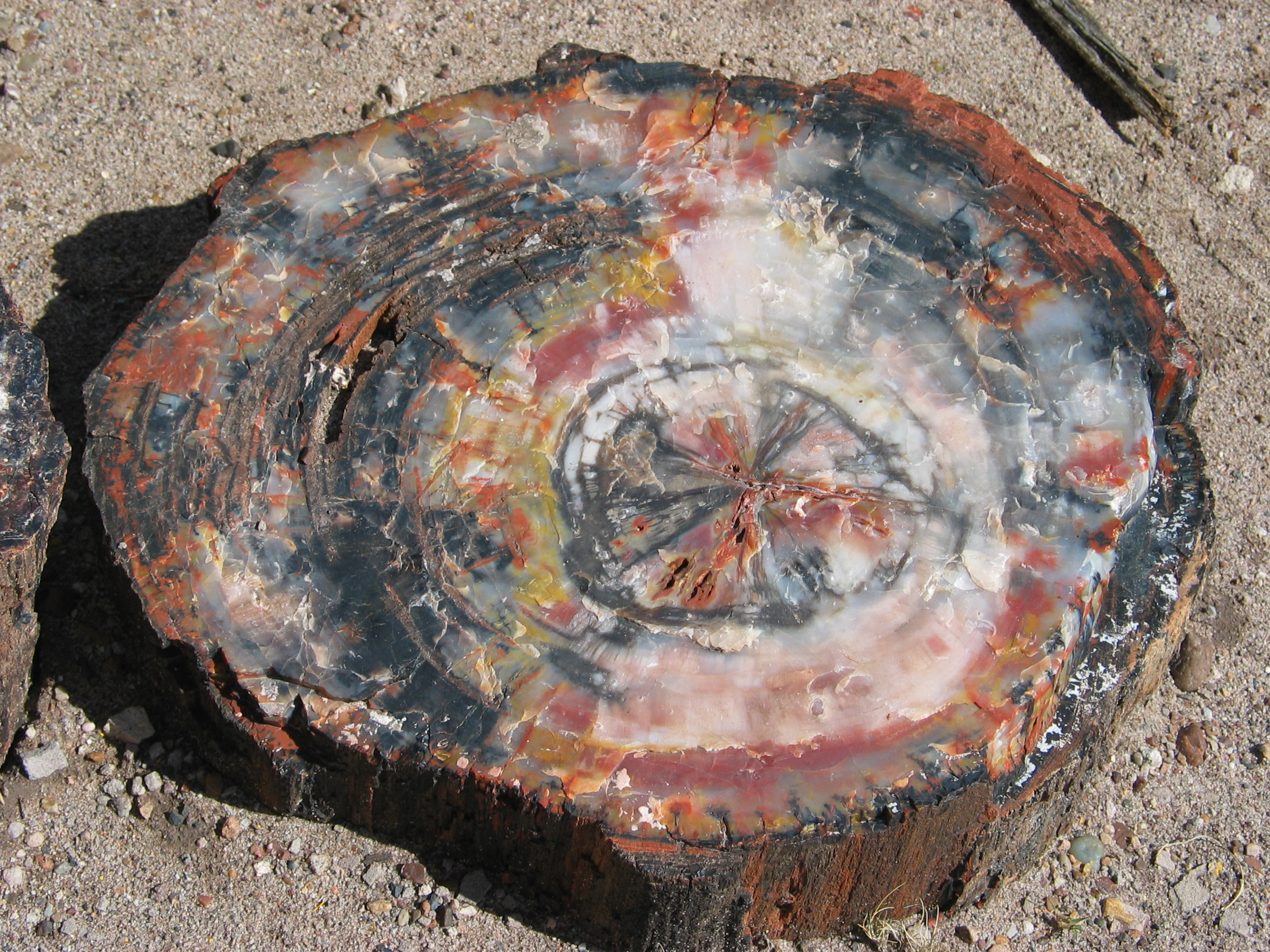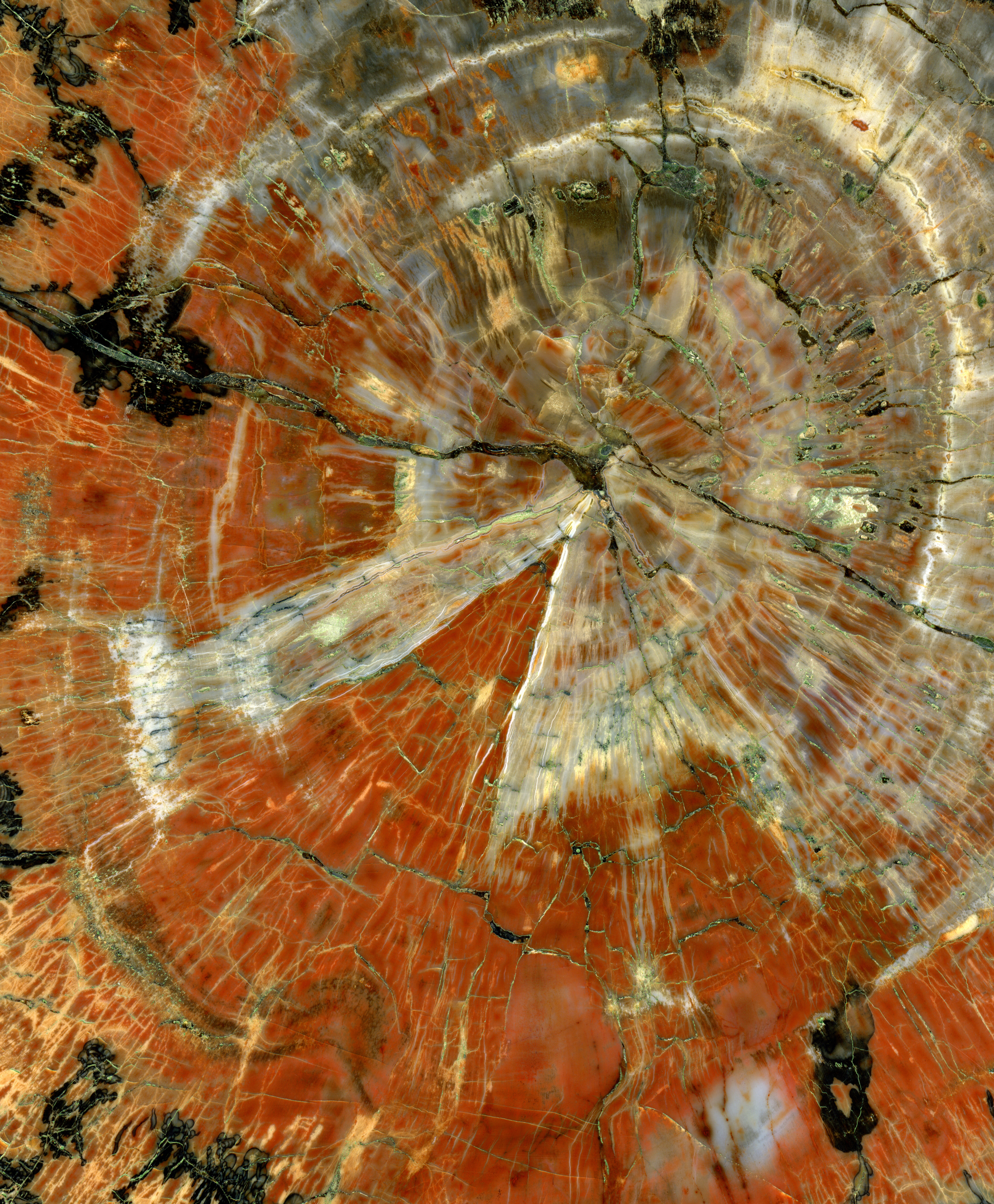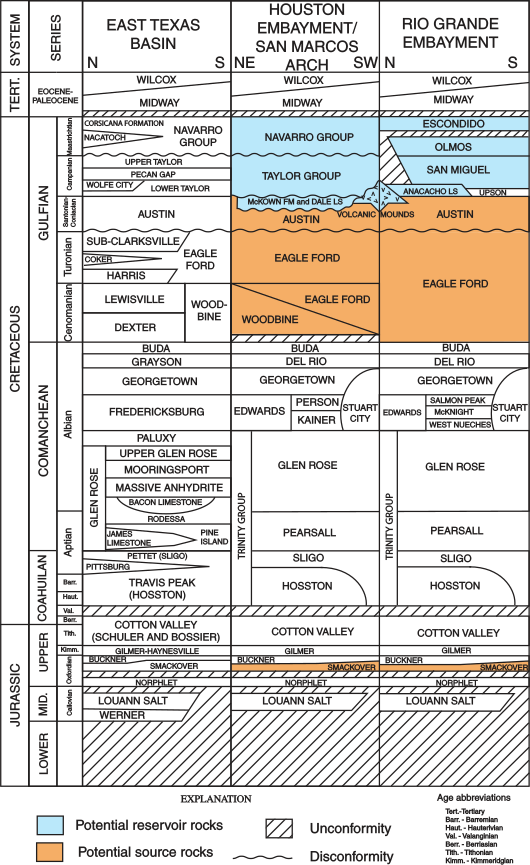|
Petrified
In geology, petrifaction or petrification () is the process by which organic material becomes a fossil through the replacement of the original material and the filling of the original pore spaces with minerals. Petrified wood typifies this process, but all organisms, from bacteria to vertebrates, can become petrified (although harder, more durable matter such as bone, beaks, and shells survive the process better than softer remains such as muscle tissue, feathers, or skin). Petrification takes place through a combination of two similar processes: permineralization and replacement. These processes create replicas of the original specimen that are similar down to the microscopic level. Processes Permineralization One of the processes involved in petrifaction is permineralization. The fossils created through this process tend to contain a large amount of the original material of the specimen. This process occurs when groundwater containing dissolved minerals (most commonly ... [...More Info...] [...Related Items...] OR: [Wikipedia] [Google] [Baidu] |
Petrified Wood
Petrified wood (from Ancient Greek meaning 'rock' or 'stone'; literally 'wood turned into stone'), is the name given to a special type of ''fossilized wood'', the fossilized remains of terrestrial plant, terrestrial vegetation. ''Petrifaction'' is the result of a tree or tree-like plants having been replaced by stone via a mineralization process that often includes permineralization and replacement. The Carbon-based life, organic materials making up cell walls have been replicated with minerals (mostly silica in the form of opal, chalcedony, or quartz). In some instances, the original structure of the stem tissue may be partially retained. Unlike other plant fossils, which are typically impressions or compressions, petrified wood is a three-dimensional representation of the original organic material. The petrifaction process occurs underground, when wood becomes buried in water or volcanic ash. The presence of water reduces the availability of oxygen which inhibits aerobic dec ... [...More Info...] [...Related Items...] OR: [Wikipedia] [Google] [Baidu] |
Petrified Forest National Park
Petrified Forest National Park is a national park of the United States in Navajo and Apache counties in northeastern Arizona. Named for its large deposits of petrified wood, the park covers about , encompassing semi-desert shrub steppe as well as highly eroded and colorful badlands. The park's headquarters is about east of Holbrook along Interstate 40 (I-40), which parallels the BNSF Railway's Southern Transcon, the Puerco River, and historic U.S. Route 66, all crossing the park roughly east–west. The site, the northern part of which extends into the Painted Desert, was declared a national monument in 1906 and a national park in 1962. The park received 644,922 recreational visitors in 2018. Averaging about in elevation, the park has a dry windy climate with temperatures that vary from summer highs of about to winter lows well below freezing. More than 400 species of plants, dominated by grasses such as bunchgrass, blue grama, and sacaton, are found in the park. Fau ... [...More Info...] [...Related Items...] OR: [Wikipedia] [Google] [Baidu] |
Petrified Wood Closeup 2
In geology, petrifaction or petrification () is the process by which organic material becomes a fossil through the replacement of the original material and the filling of the original pore spaces with minerals. Petrified wood typifies this process, but all organisms, from bacteria to vertebrates, can become petrified (although harder, more durable matter such as bone, beaks, and shells survive the process better than softer remains such as muscle tissue, feathers, or skin). Petrification takes place through a combination of two similar processes: permineralization and replacement. These processes create replicas of the original specimen that are similar down to the microscopic level. Processes Permineralization One of the processes involved in petrifaction is permineralization. The fossils created through this process tend to contain a large amount of the original material of the specimen. This process occurs when groundwater containing dissolved minerals (most commonly ... [...More Info...] [...Related Items...] OR: [Wikipedia] [Google] [Baidu] |
Fossils
A fossil (from Classical Latin , ) is any preserved remains, impression, or trace of any once-living thing from a past geological age. Examples include bones, shells, exoskeletons, stone imprints of animals or microbes, objects preserved in amber, hair, petrified wood and DNA remnants. The totality of fossils is known as the ''fossil record''. Though the fossil record is incomplete, numerous studies have demonstrated that there is enough information available to give a good understanding of the pattern of diversification of life on Earth. In addition, the record can predict and fill gaps such as the discovery of '' Tiktaalik'' in the arctic of Canada. Paleontology includes the study of fossils: their age, method of formation, and evolutionary significance. Specimens are sometimes considered to be fossils if they are over 10,000 years old. The oldest fossils are around 3.48 billion years to 4.1 billion years old. Early edition, published online before print. ... [...More Info...] [...Related Items...] OR: [Wikipedia] [Google] [Baidu] |
Fossil
A fossil (from Classical Latin , ) is any preserved remains, impression, or trace of any once-living thing from a past geological age. Examples include bones, shells, exoskeletons, stone imprints of animals or microbes, objects preserved in amber, hair, petrified wood and DNA remnants. The totality of fossils is known as the ''fossil record''. Though the fossil record is incomplete, numerous studies have demonstrated that there is enough information available to give a good understanding of the pattern of diversification of life on Earth. In addition, the record can predict and fill gaps such as the discovery of '' Tiktaalik'' in the arctic of Canada. Paleontology includes the study of fossils: their age, method of formation, and evolutionary significance. Specimens are sometimes considered to be fossils if they are over 10,000 years old. The oldest fossils are around 3.48 billion years to 4.1 billion years old. Early edition, published online before prin ... [...More Info...] [...Related Items...] OR: [Wikipedia] [Google] [Baidu] |
Geology
Geology (). is a branch of natural science concerned with the Earth and other astronomical objects, the rocks of which they are composed, and the processes by which they change over time. Modern geology significantly overlaps all other Earth sciences, including hydrology. It is integrated with Earth system science and planetary science. Geology describes the structure of the Earth on and beneath its surface and the processes that have shaped that structure. Geologists study the mineralogical composition of rocks in order to get insight into their history of formation. Geology determines the relative ages of rocks found at a given location; geochemistry (a branch of geology) determines their absolute ages. By combining various petrological, crystallographic, and paleontological tools, geologists are able to chronicle the geological history of the Earth as a whole. One aspect is to demonstrate the age of the Earth. Geology provides evidence for plate tectonics, the ev ... [...More Info...] [...Related Items...] OR: [Wikipedia] [Google] [Baidu] |
Girolamo Segato
Girolamo Segato (13 June 1792 – 3 February 1836) was an Italian naturalist, cartographer, Egyptologist, and anatomist. He is perhaps best known for his work in the artificial petrifaction of human cadavers. Segato was born in the Carthusian monastery of Vedana. As a child, Segato learned basic sciences from Antonio Bagini, a Sospirolo priest. After studying under Bagini, Segato spent a short time as an accountant in Treviso before returning to secondary schooling in Belluno, where his teacher was Tomaso Antonio Catullo. From 1818 onwards Segato participated in several archaeological expeditions to Egypt, where he became an expert in the techniques of mummification; however, most of his studies undertaken during these trips were lost. Upon his return to Florence in 1823, Segato developed a technique similar to mummification, but unique: rather than simply removing water from cadavers, Segato's method consisted of what appears to be mineralization or "petrification". His partic ... [...More Info...] [...Related Items...] OR: [Wikipedia] [Google] [Baidu] |
Agate House Pueblo
Agate House is a partially reconstructed Puebloan building in Petrified Forest National Park, built almost entirely of petrified wood. The eight-room pueblo has been dated to approximately the year 900 and occupied through 1200, of the Pueblo II and Pueblo III periods. The agatized wood was laid in a clay mortar, in lieu of the more usual sandstone-and-mortar masonry of the area. The ruins of Agate House were reconstructed by the Civilian Conservation Corps The Civilian Conservation Corps (CCC) was a voluntary government unemployment, work relief program that ran from 1933 to 1942 in the United States for unemployed, unmarried men ages 18–25 and eventually expanded to ages 17–28. The CCC was ... in 1933-34 under the direction of C.B. Cosgrove Jr. of the New Mexico Laboratory of Anthropology. Room 7 was fully reconstructed with a new roof. Room 2's walls were rebuilt to a height of five feet, but not roofed, and the remaining walls were rebuilt to a height of tw ... [...More Info...] [...Related Items...] OR: [Wikipedia] [Google] [Baidu] |
Permineralization
Permineralization is a process of fossilization of bones and tissues in which mineral deposits form internal Casting, casts of organisms. Carried by water, these minerals fill the spaces within organic tissue. Because of the nature of the casts, permineralization is particularly useful in studies of the internal structures of organisms, usually of plants. Process Permineralization, a type of fossilization, involves deposits of minerals within the cells of organisms. Water from the ground, lakes, or oceans seeps into the pores of organic tissue and forms a crystal cast with deposited minerals. Crystals begin to form in the porous cell walls. This process continues on the inner surface of the walls until the central cavity of the cell, the Lumen (anatomy), lumen, is completely filled. The cell walls themselves remain intact surrounding the crystals. Silicification In silicification, the weathering of rocks releases silicate minerals and the silica makes its way into a body of still ... [...More Info...] [...Related Items...] OR: [Wikipedia] [Google] [Baidu] |
Pacific Northwest National Laboratory
Pacific Northwest National Laboratory (PNNL) is one of the United States Department of Energy national laboratories, managed by the Department of Energy's (DOE) Office of Science. The main campus of the laboratory is in Richland, Washington, with additional research facilities around the country. Originally named the Pacific Northwest Laboratory, PNL was established in 1965 when research and development at the Hanford Site was separated from other Hanford operations. In 1995, the laboratory was renamed the Pacific Northwest National Laboratory (PNNL). Research facilities The Environmental Molecular Sciences Laboratory (EMSL) is a U.S. Department of Energy national scientific user facility. EMSL provides researchers around the world with integrated capabilities in oxide and mineral interface chemistry, high-performance computing and computational chemistry software, mass spectrometry, high-field magnetic resonance, and subsurface flow and transport research. The Biopr ... [...More Info...] [...Related Items...] OR: [Wikipedia] [Google] [Baidu] |
Glen Rose Formation
The Glen Rose Formation is a shallow marine to shoreline geological formation from the lower Cretaceous period exposed over a large area from South Central to North Central Texas. The formation is most widely known for the dinosaur footprints and trackways found in the Dinosaur Valley State Park near the town of Glen Rose, Texas, southwest of Fort Worth and at other localities in Central Texas. Geology The Glen Rose is the uppermost, thickest and most extensively exposed formation of the Trinity Group, a series of shallow-water marine formations deposited on a southeastward flank of the Llano Uplift, through a number of sea regressions and transgressions. Wells drilled in eastern Travis County have encountered over 1,000 feet of the Glen Rose. In the northern part, the Glen Rose is laterally continuous with the Paluxy Formation. The Glen Rose overlies the Hensel Sand and is overlain in turn by formations of the Fredericksburg division. In 1974, Keith Young concl ... [...More Info...] [...Related Items...] OR: [Wikipedia] [Google] [Baidu] |
Wood
Wood is a structural tissue/material found as xylem in the stems and roots of trees and other woody plants. It is an organic materiala natural composite of cellulosic fibers that are strong in tension and embedded in a matrix of lignin that resists compression. Wood is sometimes defined as only the secondary xylem in the stems of trees, or more broadly to include the same type of tissue elsewhere, such as in the roots of trees or shrubs. In a living tree, it performs a mechanical-support function, enabling woody plants to grow large or to stand up by themselves. It also conveys water and nutrients among the leaves, other growing tissues, and the roots. Wood may also refer to other plant materials with comparable properties, and to material engineered from wood, woodchips, or fibers. Wood has been used for thousands of years for fuel, as a construction material, for making tools and weapons, furniture and paper. More recently it emerged as a feedstock for the production ... [...More Info...] [...Related Items...] OR: [Wikipedia] [Google] [Baidu] |








